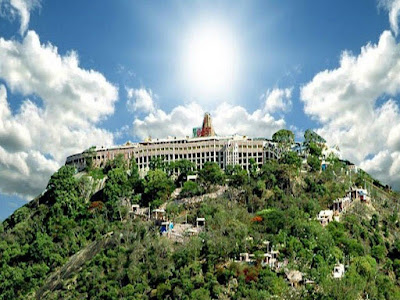.jpg) |
| Bagalamukhi Devi |
Deity worship is an important aspect of Dharmic religions. It exist in Jainism, Buddhism and Hindu sects such as Vaishnavam, Shaktam, Shaivam, Ganapatyam, Kaumaram and Sauram. Many folk deities such as Isakki Amman, Karuppar, Rakayee Amman are from the existing Dharmic pantheon which were localized according to the needs of the people.
In Jainism, a class of supernatural beings known as Yakshi such as Ambika Devi are worshipped as Isakki Amman by the present day Hindus. These Yakshis used to function as the sasana devis (protector goddess) of Jain Tirthankaras. Ambika Devi was the sasana devi of Nemi Natha. She is presently the kuladevi of many Hindu families.
The various deities in this world have been around for many centuries or even millennia under various names. What has changed is just the method of worship. In the future blog post, we will take a look at some of the deities in non-Indian traditions and compare the parallels with our Indian traditions.
As far as present day Hinduism is concerned, it is important to have several components in deity worship. A deity will need to have its own Moola Mantra, Dhyana Sloka, Kavacham, Namavali, Yantra and Purana. Some of it are lost but some are intentionally kept hidden.
This is because the proper worship of certain deities are considered as rahasya (secret). There are some rules to follow and it will usually be shared with only those in the sampradaya's parampara (spiritual lineage). Therefore, it is important for present day Hindus to understand the proper method of worshipping deities.
Today, many Hindus come up with their own opinion about deity worship. Opinions are fine even if they can be ridiculous. But having an opinion about something does not make the practice right. It has to be remembered that each deity has its own do's and don'ts. Having said this, it is only right that the correct method is used when dealing with a deity. These methods are found in the manuals known as Tantra.
Why ignore the guidance given in the manual book?
Some deities like Smashana (cemetery) Kali were never meant to be worshipped by householders inside the house where the family resides. The are rules to follow and if one disregards the rules, then there will be unwanted consequences. Smashana Kali must be worshipped outside the house, preferably in a shrine/temple next to the cemetery using proper Vamachara methods. She is not a vegetarian deity. So don't turn her into one. You can always worship Dakshina Kali if you prefer the vegetarian way of doing things.
We don't burst fireworks inside our house just because we can, right?
The Vajrayana Buddhists have the concept of Deity Yoga. They follow the prescribed methods as laid out in the Buddhist tantras. Initiation and guidance from a legitimate Guru is necessary else the practitioner may do mistakes.
Similarly we have many legitimate sampradayas in Hinduism. Each adheres to a particular set of Tantras. Sometimes it will be called as Agama or Nigama depending on its origin and content. We can dwell deeper into Tantras on another day.
You may have an ishta devata (favorite deity). Try to find out the moola mantra (root mantra) and the beeja mantra (seed mantra) used to invoke the deity. Understand the dhyana sloka (meditation verse) as this is important for you to visualize the deity. The deity must be visualized according to the dhyana sloka and not as however one likes. Kurukulla is red. Meenakshi is emerald green. Vaishnavi sits on a Garuda. Ayyappa is a bachelor but his other Dharmasastha form is that of a householder with Poorna and Pooshkala on both sides. So the visualization must be correct.
The deity will have a set of protective hymns that functions as an armour. This is known as a kavacha. A kavacha usually contains the name of the rishi (seer) that gave it. He must be meditated upon as the preceptor whenever you recite the kavacha. Deities will also have a list of names known as namavali. They can be 108 or even 1008. Each shows the different aspects of the deity. There will be a geometric representation of the deity. This is known as a Yantra. Finally, there will be a purana which tells the story about the origins of the deity. Puranas are usually cryptic and metaphoric. It needs to be read again and again to be properly understood. Some Puranas are in oral form. It can also be part of the Sthala Purana (temple history) of the deity and not necessarily from one of the Maha Puranas.
For as much as vidya (knowledge) about the deity and the worship method matters, these are nothing without bakthi (devotion). So whatever done, must also be done correctly with sincere devotion.

.jpg)



